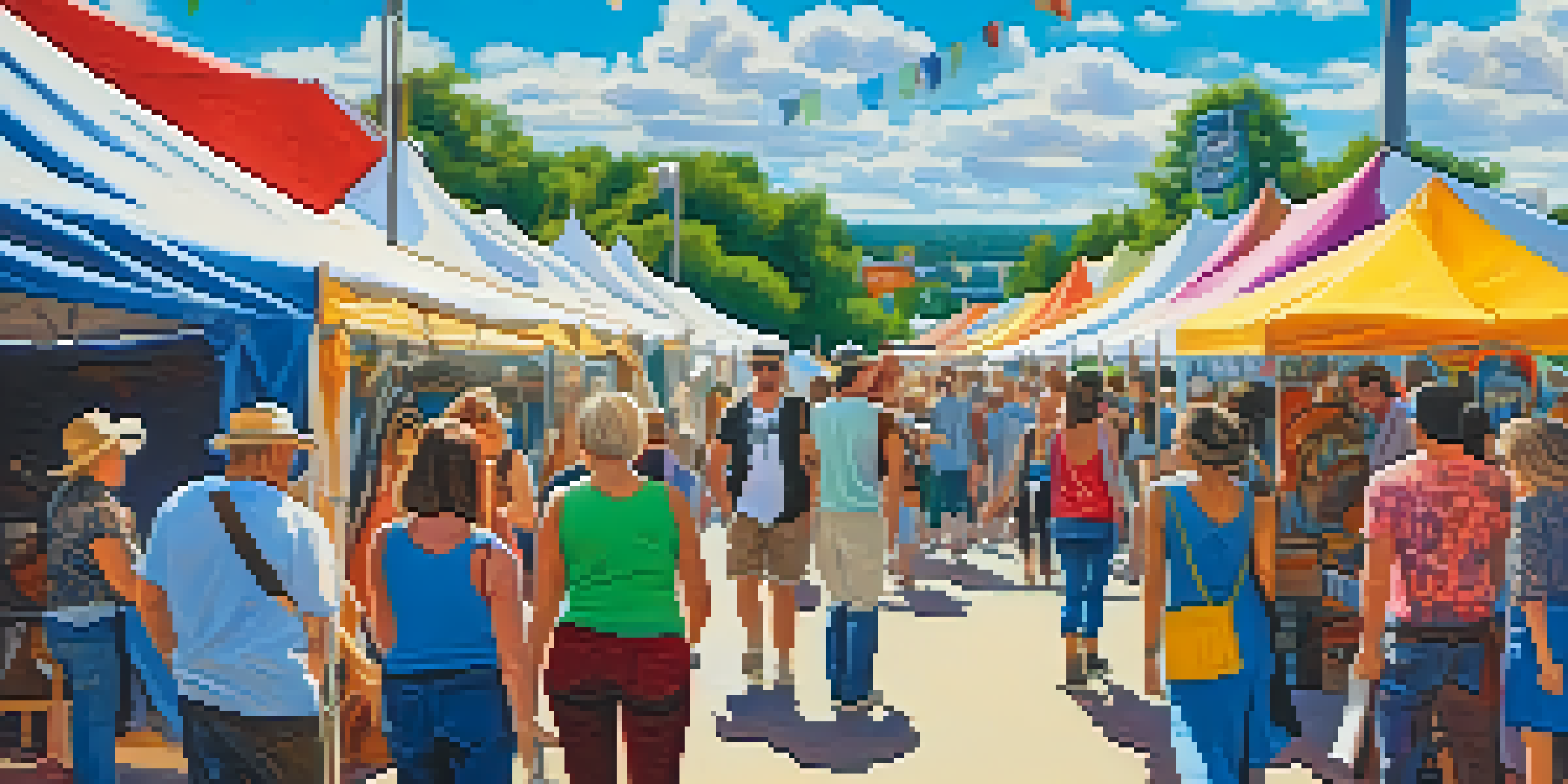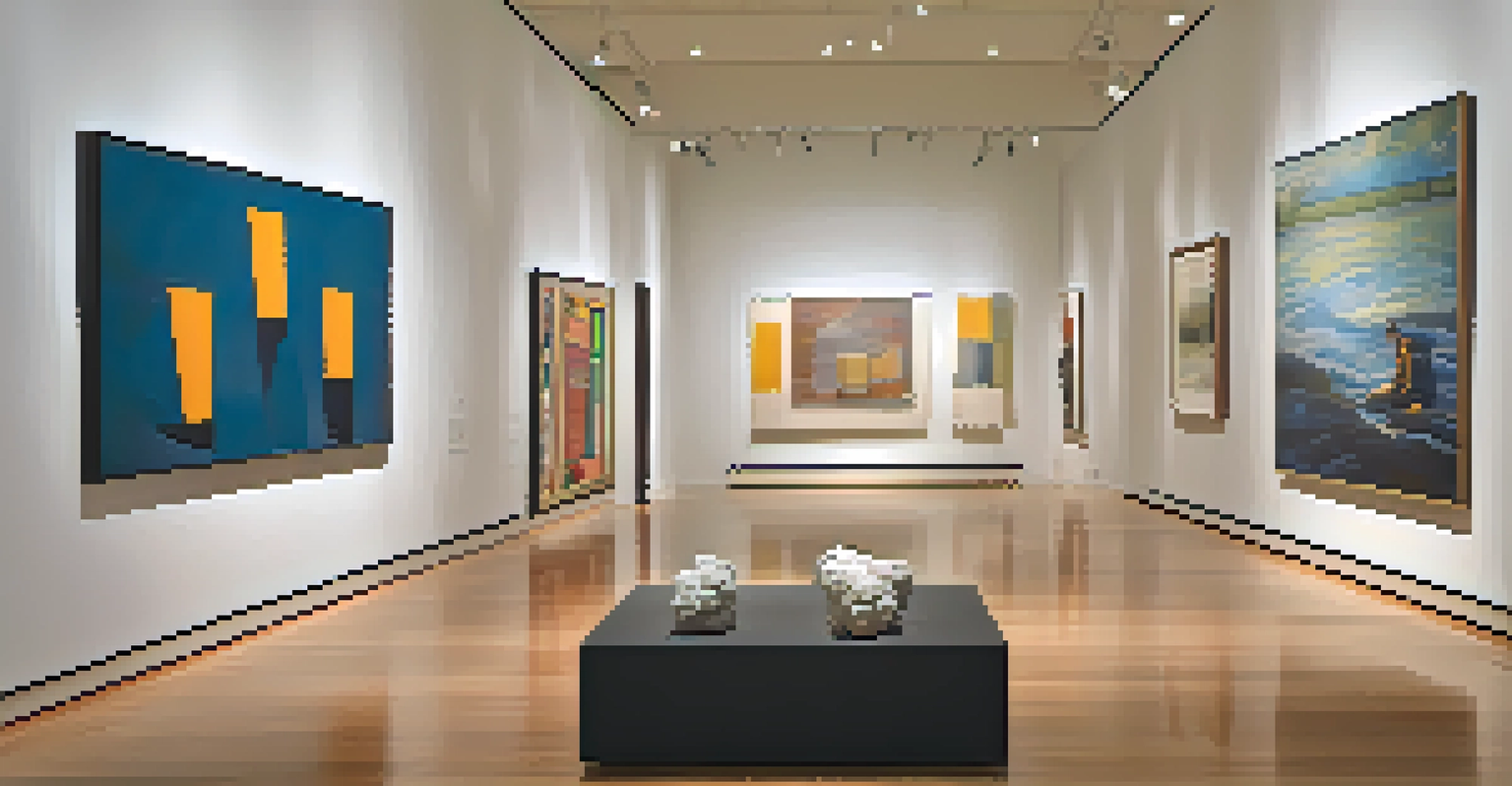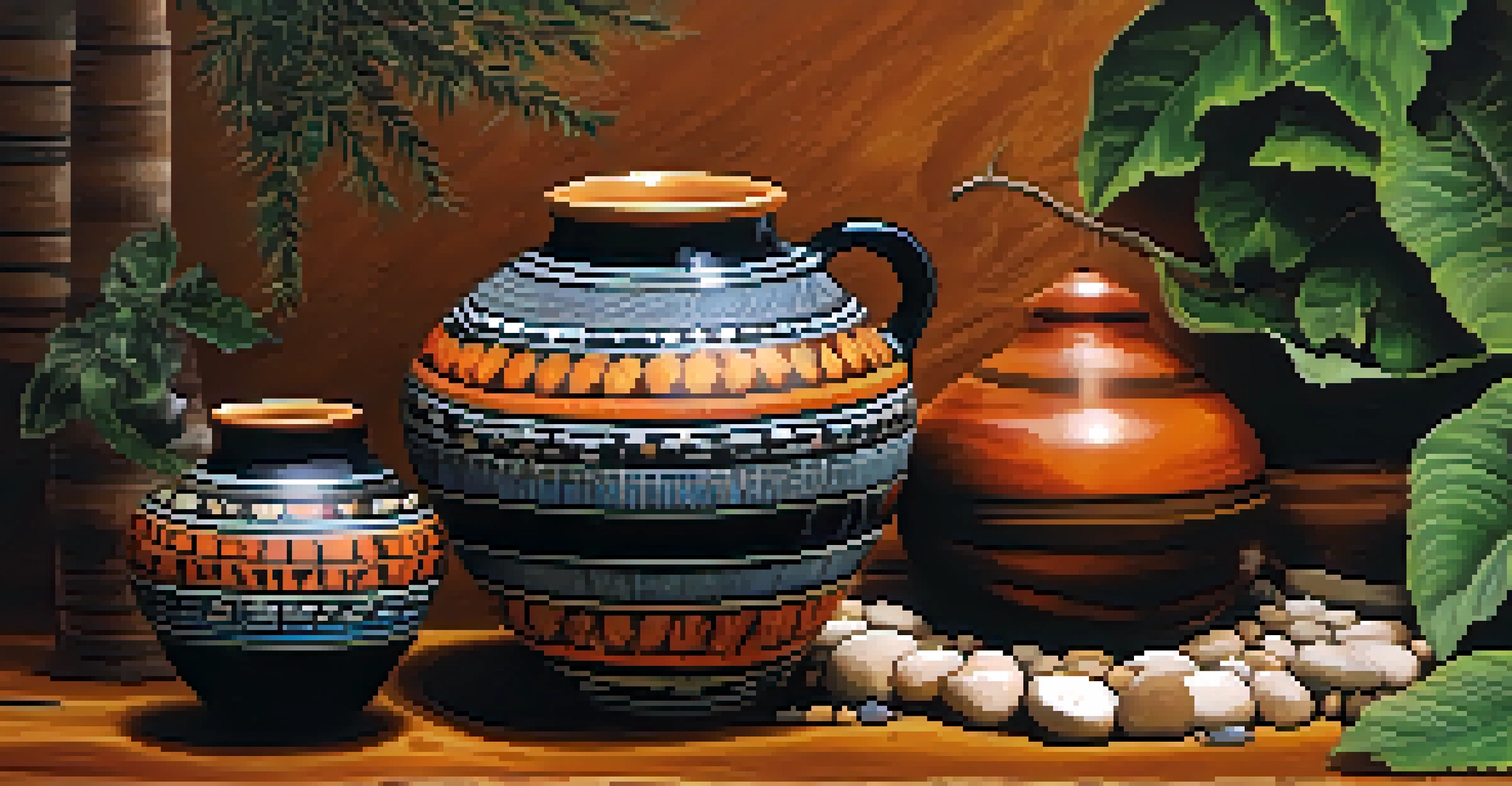Artistic Expressions: North Carolina's Visual Arts Legacy

The Roots of Artistic Expression in North Carolina
North Carolina's visual arts scene is deeply rooted in its rich history, where native traditions and cultural influences intertwine. The state's early artisans were often inspired by the landscapes, stories, and communities surrounding them. As settlers arrived, they brought diverse artistic techniques and styles, which helped shape a unique regional identity.
Art is not freedom from discipline, but disciplined freedom.
The Cherokee and other Native American tribes have a long-standing tradition of crafting pottery, weaving, and intricate beadwork. These art forms not only express cultural heritage but also serve as a means of storytelling and community identity. By exploring these indigenous contributions, we can appreciate the foundational role they played in North Carolina's artistic landscape.
As the state evolved, so did its artistic expressions, reflecting the changing societal values and technological advancements. The blend of traditional crafts and new influences has created a vibrant tapestry that continues to inspire contemporary artists today.
The Impact of the Arts and Crafts Movement
The Arts and Crafts Movement of the late 19th and early 20th centuries had a profound impact on North Carolina's visual arts. This movement emphasized handmade craftsmanship and sought to celebrate the beauty of everyday objects. Artisans in the state embraced this ideology, leading to a resurgence in traditional crafts, including pottery and woodworking.

Places like the Southern Highlands Craft Guild emerged, showcasing the works of local artisans and preserving traditional techniques. This organization played a crucial role in elevating the status of crafts as a legitimate form of artistic expression. Their efforts not only promoted local artists but also fostered a sense of community and pride in regional craftsmanship.
Cultural Roots Shape Art in NC
North Carolina's artistic expression is deeply influenced by its historical roots, indigenous traditions, and the diverse cultural narratives of its communities.
As a result, the arts and crafts movement helped establish North Carolina as a hub for fine craft and design. Today, the legacy of this movement is evident in the state's continued focus on artisanal quality and the promotion of local artists.
The Birth of North Carolina's Modern Art Scene
The mid-20th century marked a significant turning point for visual arts in North Carolina, as modernism began to influence local artists. This era was characterized by a break from traditional forms, leading to innovative approaches in painting, sculpture, and mixed media. Artists like David McCune and Kenneth Noland emerged, challenging conventional norms and pushing the boundaries of artistic expression.
Every artist dips his brush in his own soul, and paints his own nature into his pictures.
As universities and art schools began to flourish, they played a pivotal role in nurturing emerging talent. Institutions such as the University of North Carolina at Greensboro and the North Carolina State University College of Design became breeding grounds for new ideas and experimentation. These schools attracted artists from across the country, further enriching the state's artistic landscape.
This modern movement laid the groundwork for a diverse array of artistic voices, each contributing their unique perspectives and styles to North Carolina's visual arts legacy. This period of growth and exploration set the stage for the flourishing art scene we see today.
Celebrating Folk Art in North Carolina
Folk art holds a special place in North Carolina's visual arts heritage, reflecting the everyday lives and stories of its people. It encompasses a wide range of expressions, from traditional quilting and basket weaving to vibrant painting and sculpture. These art forms often draw on local materials and cultural narratives, making them deeply rooted in the region's history.
The state is home to a wealth of folk artists, such as the renowned potter Ben Owen III and painter Maud Gatewood, who have gained recognition for their unique interpretations of folk traditions. These artists often blend personal experiences with cultural themes, creating works that resonate with both locals and visitors alike. Their contributions help preserve the stories and traditions of North Carolina's diverse communities.
Modern Movement Transforms Art Scene
The mid-20th century modernism movement significantly evolved North Carolina's visual arts, leading to innovative approaches and new artistic voices.
Folk art not only enriches the state's cultural landscape but also serves as a means of community engagement. Festivals and events celebrating folk art bring people together, fostering appreciation and understanding of these rich traditions.
The Role of Galleries and Art Institutions
Galleries and art institutions play a vital role in promoting North Carolina's visual arts, providing platforms for artists to showcase their work. Institutions like the North Carolina Museum of Art and the Weatherspoon Art Museum serve as cultural hubs, offering exhibitions, educational programs, and community events. These venues not only support local artists but also engage the public in meaningful ways.
By hosting a variety of exhibitions, these institutions highlight both contemporary and historical works, allowing visitors to explore the state's artistic heritage in depth. They often collaborate with artists and curators to create thought-provoking exhibitions that reflect current trends and issues in the art world. This collaboration fosters a dynamic dialogue between artists and audiences.
Furthermore, galleries often serve as incubators for emerging talent, providing mentorship and opportunities for new artists to gain exposure. By nurturing the next generation of creators, these institutions ensure that North Carolina's visual arts legacy continues to thrive.
Art Festivals: A Celebration of Creativity
Art festivals throughout North Carolina provide vibrant platforms for artists to showcase their work and connect with the community. Events like the North Carolina Arts and Crafts Festival and the Art on the Green festival attract artists from all over the state, celebrating the diverse artistic expressions found within. These festivals create a lively atmosphere where creativity flourishes and connections are made.
Beyond showcasing visual arts, these festivals often include live music, workshops, and interactive activities, making them a truly immersive experience for attendees. They encourage community participation and provide opportunities for people to engage with art in a hands-on way. Visitors can meet artists, learn about their processes, and even purchase unique pieces to take home.
Art Festivals Foster Community Spirit
Art festivals across North Carolina celebrate creativity, bringing artists and communities together while enhancing appreciation for local art.
These celebrations foster a sense of pride in the state's artistic community and highlight the importance of supporting local creators. By participating in art festivals, both artists and audiences contribute to a thriving cultural landscape that continues to evolve.
The Future of Visual Arts in North Carolina
As we look to the future, the visual arts in North Carolina continue to evolve, influenced by technological advancements and shifting cultural paradigms. Artists are increasingly exploring digital mediums, incorporating technology into their work and expanding the boundaries of traditional art forms. This innovation opens up new possibilities for expression and collaboration.
Moreover, the growing emphasis on inclusivity and diversity in the arts is shaping the next generation of artists. Many contemporary creators are drawing inspiration from their unique backgrounds and experiences, enriching the tapestry of North Carolina's visual arts with fresh perspectives. This movement encourages a broader dialogue about identity and representation in the artistic community.

Ultimately, the future of visual arts in North Carolina looks bright, with a commitment to nurturing talent and embracing innovation. By continuing to support local artists and celebrate their contributions, the state can ensure that its rich visual arts legacy remains vibrant and impactful for years to come.